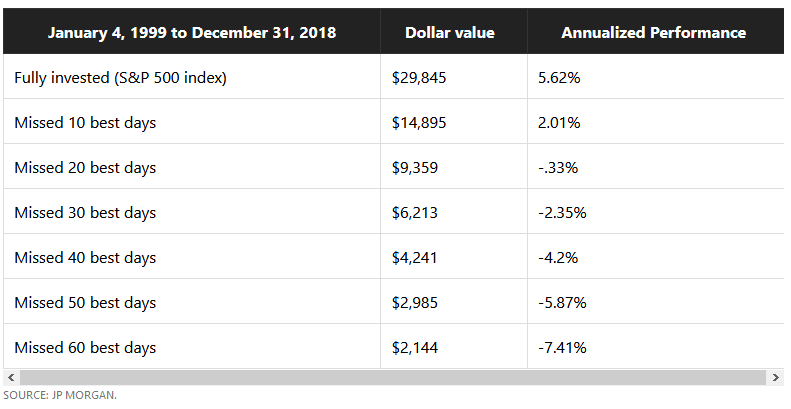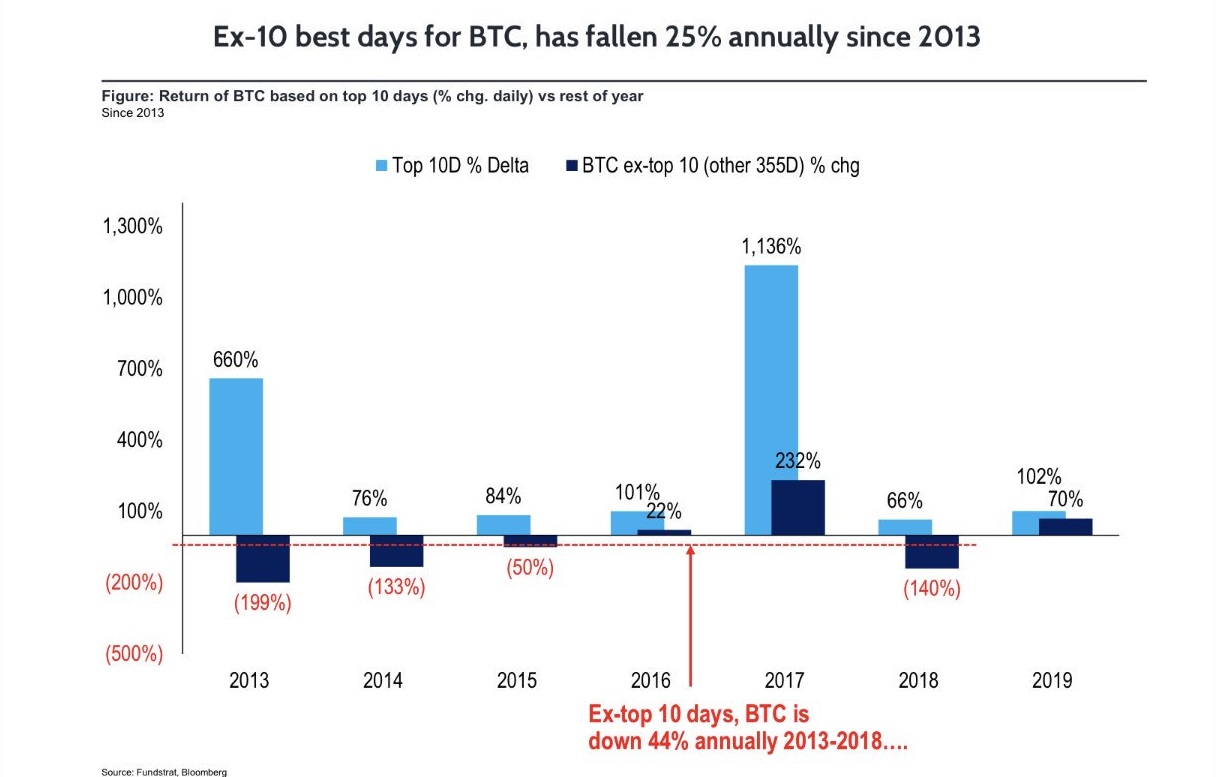Thomas Lee, co-founder of Fundstrat, recently recalled in a tweet that Bitcoin's biggest profits were made on the ten best trading days.
Every year, the vast majority of Bitcoin's price gains are only made on the ten best trading days, Lee observes. During the last bull market in 2017, the price rose by an incredible 1'136% in those ten days. But even during the bear market of 2018, the best ten days recorded a gain of 66%.
Bitcoin's increase in value since 2013 without the 10 best days, results in a return of -25% p.a.
Without the ten best days, Bitcoin's average annual growth over the period from 2013 to 2019 was even negative (-25% p.a.). By way of comparison: Bitcoin's value growth over the last few years was 2016 (+89%), 2017 (+1610%), 2018 (-72%), 2019 (+105%).
Applicable to other asset classes as well
By the way, this observation can also be made in other asset classes. A study by JP Morgan has shown that missing the 10 best trading days over the last 20 years in the S&P 500 Index has already caused more than half the average annual performance (2.01% instead of 5.62%). Missing the 20 best trading days even resulted in a negative annual increase (-0.33%).

Trying to time the market is extremely difficult to do consistently. Market lows often result in emotional decision making. Investing for the long-term while managing volatility can result in a better outcome.
Whether you are a private investor or a fundmanager looking to generate alpha, you might want to include these statistics into your strategy.





